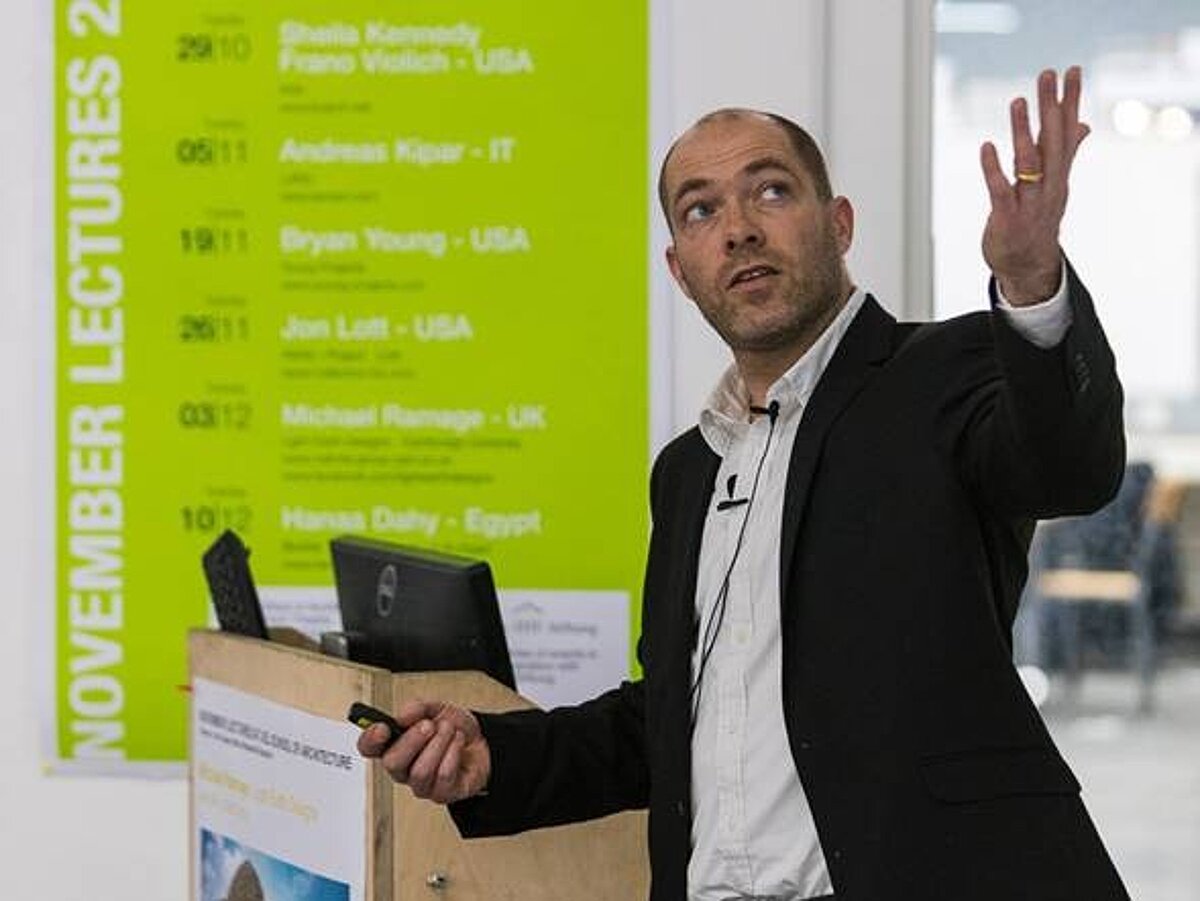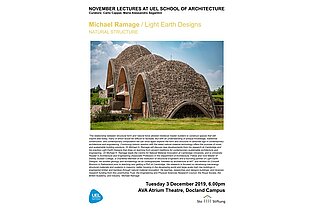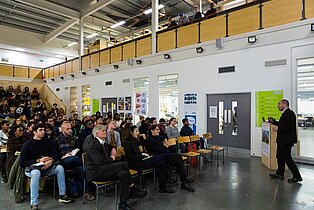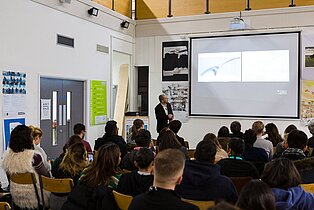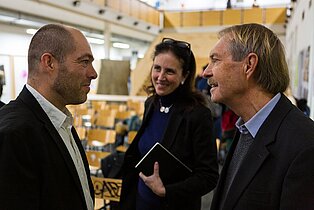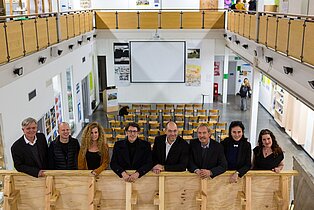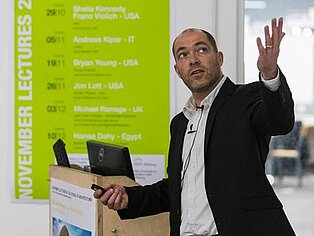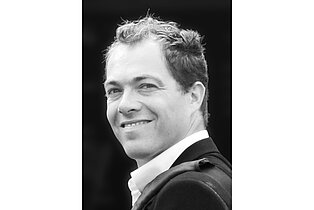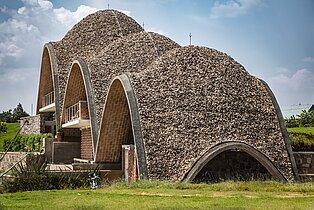Review | Michael Ramage in London
The fifth November Lecture to take place in London was delivered by architectural engineer Michael Ramage. Ramage leads the Centre for Natural Material Innovation at Cambridge University. He is also a fellow of Sidney Sussex College and a founding partner of the practice Light Earth Designs. Ramage studied geology and archaeology before moving to an architecture masters at Massachusetts Institute of Technology. He then worked at a structural engineering firm in Switzerland before taking a PhD at Cambridge.
Ramage’s lecture focused on new research on natural material innovation and sustainable design solutions, but he also emphasized the importance of looking to history to inform our buildings of the future. He began his lecture with an appraisal of The Chapel of King's College, London, built in the 19th-century through generations of masonry expertise. It wasn’t until hundreds of years later, Ramage explained, that experts came to understand the theory of structural engineering behind the chapel. Ramage shared his admiration of the chapel’s confluence of geometry, space, light, acoustics, masonry, architecture, and engineering, still in evidence 500 years on.
Ramage related aspects of the chapel’s masonry vaults, and the nineteenth century technique of structural analysis that have influenced his own work. He explained the efficiency and natural beauty in coinciding geometry and structure, and the incredibly sculptural results that can be achieved through masonry. He explained how the chapel’s gothic vaults have influenced his own projects including the design of masonry arches for a wine-tasting restaurant in central London and a conference centre in Dover, as well as sharing examples of low-energy systems in masonry by other practices around the world.
Ramage then moved on to Rwanda Cricket Stadium, a project recently completed by the practice, explaining the challenges posed by the hilly topography of this region of central Africa. Ramage explained how the project, designed around the path of a ball bouncing down a slope, uses the masonry vault technique, merged with a technique of building with earth excavated from the project’s foundations. He also explained how local people were employed to handcraft the building over an intensive eight-month period, feeding into a poverty relief programme for the area.
Ramage went on to share a project by the practice in San Francisco. He explained how the practice overcame the challenge of using brick masonry for a temporary structure in an earthquake zone, using reinforcement techniques developed in the Centre for Natural Material Innovation at Cambridge.
Ramage moved on to the importance of leaving behind the heroic age of refining ores and extracting minerals as building materials, and exploring the potential of engineered natural materials for the future. He shared insight into research taking place at Cambridge into new natural materials as a basis for construction, including experiments in improved engineered timber and bamboo.
Ramage then moved on to look at the story of cross-laminated timber in construction, starting with Waugh Thistleton’s Murray Grove, in London, 2007, which led the way in high-rise timber construction, and the race to the tallest timber structure in the world, currently in Norway. Ramage related this to the rapid progress of steel skyscrapers in the twentieth century, projecting the same advances in the use of timber in the first half of the twenty-first century.
Ramage compared the sustainability credentials of timber to concrete and steel, and looked to the wider impacts of a shift in material construction towards timber, highlighting in particular the duty of stewardship for people and the environment. Ramage relayed research from the BRE with the University of Edinburgh into the future fire safety of tall timber structures, and discussed the potential for scaling up the adoption of timber construction, taking into consideration the size of Canada’s annual sustainable timber harvest as an example.
Ramage also discussed the impact of increasing the value of products from the forest on improving land stewardship, and the potential for large-scale timber construction to revive industry and employment in cities such as Chicago. He closed by sharing his optimism for skylines of the future transformed for the better with skyscrapers made of timber.
Interview-Video
Michael Ramage spoke about the natural and local building materials he uses for his projects.


